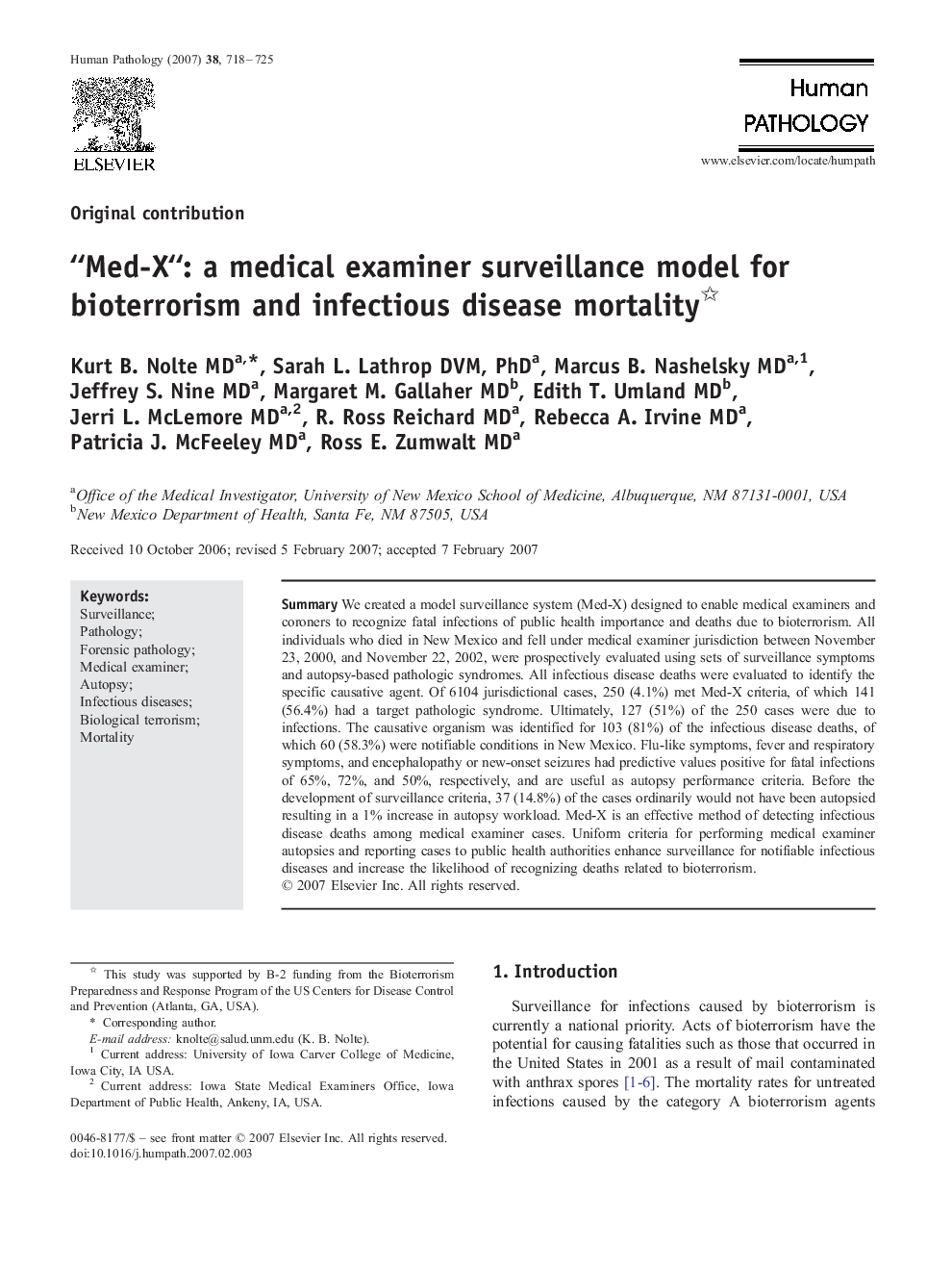| Article ID | Journal | Published Year | Pages | File Type |
|---|---|---|---|---|
| 4135271 | Human Pathology | 2007 | 8 Pages |
SummaryWe created a model surveillance system (Med-X) designed to enable medical examiners and coroners to recognize fatal infections of public health importance and deaths due to bioterrorism. All individuals who died in New Mexico and fell under medical examiner jurisdiction between November 23, 2000, and November 22, 2002, were prospectively evaluated using sets of surveillance symptoms and autopsy-based pathologic syndromes. All infectious disease deaths were evaluated to identify the specific causative agent. Of 6104 jurisdictional cases, 250 (4.1%) met Med-X criteria, of which 141 (56.4%) had a target pathologic syndrome. Ultimately, 127 (51%) of the 250 cases were due to infections. The causative organism was identified for 103 (81%) of the infectious disease deaths, of which 60 (58.3%) were notifiable conditions in New Mexico. Flu-like symptoms, fever and respiratory symptoms, and encephalopathy or new-onset seizures had predictive values positive for fatal infections of 65%, 72%, and 50%, respectively, and are useful as autopsy performance criteria. Before the development of surveillance criteria, 37 (14.8%) of the cases ordinarily would not have been autopsied resulting in a 1% increase in autopsy workload. Med-X is an effective method of detecting infectious disease deaths among medical examiner cases. Uniform criteria for performing medical examiner autopsies and reporting cases to public health authorities enhance surveillance for notifiable infectious diseases and increase the likelihood of recognizing deaths related to bioterrorism.
